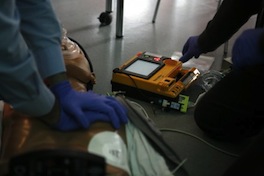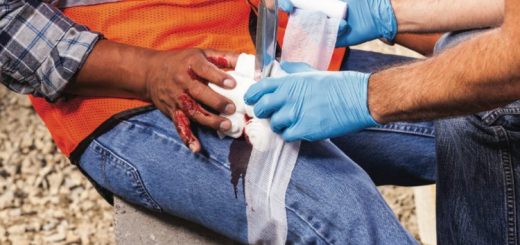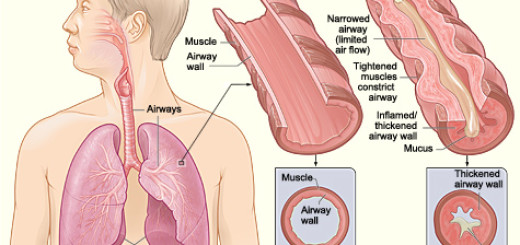What is Basic Life Support (BLS)?
Basic Life Support (BLS) is defined as “maintaining airway patency and supporting breathing and the circulation without the use of equipment other than a protective device” (Source: Resuscitation Council UK)
So what exactly is Basic Life Support?
Basic Life Support is used to help patients who have suffered a cardiac arrest. This means their heart has stopped beating so blood is not being pumped around the body.
Basic Life Support involves taking over the role of the person’s heart & lungs in order to keep vital organs alive (eg: the brain!)
Basic Life Support involves performing chest compressions and rescue breaths. By performing chest compressions you are pushing blood around the body, and rescue breaths push oxygen into the lungs. This process keeps the vital organs supplied with blood.
Anyone can learn to perform Basic Life Support (BLS) and this is often a core topic on first aid courses. Prompt BLS is incredibly important when a patient suffers a cardiac arrest.
Once emergency medical services arrive they will continue Basic Life Support whilst they carry out more advanced interventions (termed ‘Advanced Life Support’ – ALS). You can read our blog post on What is Advanced Life Support to learn more.
Our free online first aid course covers basic life support skills and can teach you how to save someone’s life!





